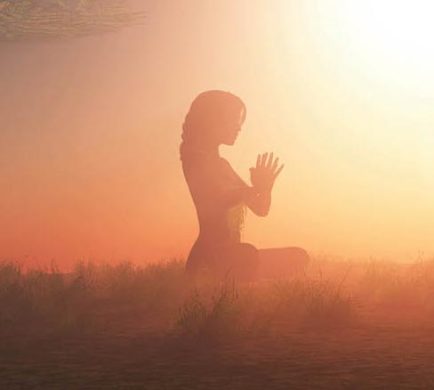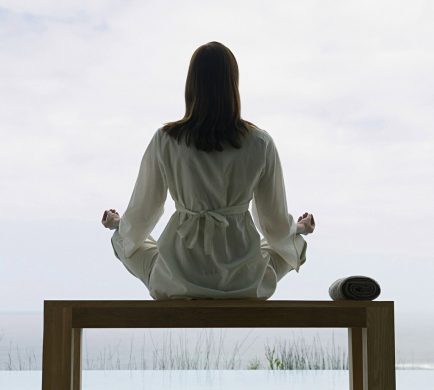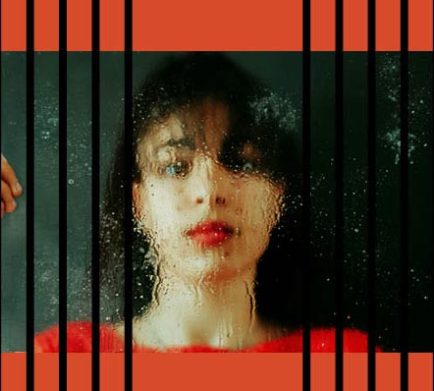It may be Time to Reconnect with the Wider Living World
I first began to struggle with anxiety and depression when I was a teenager.
Despite a loving and happy childhood, by high school, isolation, rejection, and impossibly high standards for myself had led to intense feelings of self-hatred and despair. I don’t think it was a coincidence that, though I continued to make straight As and participate in sports, I’d lost touch with much of what lies at the core of who I am—my sensitive nature, my love of writing stories, and my deep connection to the moss-covered forests near my home.
Similarly, I don’t think it’s a coincidence that the world is experiencing record rates of anxiety and depression at a time when we’re as alienated from the natural world as we’ve ever been.
Everyone is different, but for me, reconnecting with nature was powerful medicine and the key to healing. And it wasn’t just the cortisol-lowering benefits of being outdoors, powerful as that is—it was relating to other living beings in a different way and realizing that I’m neither separate nor alone. Rather, I belong to a wider, living world—something far larger than myself. We human beings are animals, after all—an idea I explore in my novel This Animal Body.
It took years of trial and error with help from many others, including a therapist, but here’s what I learned about how we can heal by reconnecting with the natural world:
Spend Time with Your Wild Family
In my mid-thirties, I went off antidepressant medication, moved cross-country, and started a new
career as a coach all at the same time. Perhaps not the best decision, and perhaps unsurprisingly, depression soon resurfaced with a vengeance.
I started going on walks through nearby parks to decrease my stress and anxiety. As I trekked the same trails every day, I began to recognize the beings around me. The lizard with the electric blue tail who
always darted behind the rock when he sensed my approach; the beech tree with the smooth, silver bark that all the slugs loved to climb after every rain; or the spider who re-engineered her beautiful, iridescent web across the path every morning just high enough so I didn’t walk into it—they first became acquaintances, then neighbors, then friends. Eventually, they felt like family.
My stress and anxiety decreased, but something bigger happened as well. As I spent more time with the wild ones, I noticed how different all the beings were—some were loud, some silent, some fast, some slow, some impressively colorful, and others undeniably drab. Many were weird, awkward, or ungainly, yet all of them had their own unique beauty and an important role to play.
Eventually, I came to understand that I did too.
As these beautiful, diverse beings showed up and embraced me over and over, I came to realize that whatever I do, I am worthy, and however imperfect, I am always welcome.
Let Your Body Lead You
When I was first starting to get depressed, someone observed that I was always in my head. At the time, I was utterly confused—where else could I possibly be?
It was only decades later, when learning a new way of walking through the woods that I discovered the answer.
I’d just learned a technique where you tune into your body and let it lead you wherever it wants to go. As I wandered this way through the woods, my body would often lead me to things I loved—deer, hummingbirds, or cranefly orchids.
Frequently, I found myself playing in ways I hadn’t since I was a child—balancing across a fallen log, trying to sneak up on a turtle, or imitating a great blue heron.
Always I felt a sense of freedom, joy, and childlike wonder—all absent for long periods of my life.
Over time, I’ve learned that the answer to my childhood question is this—my body. When I’m in my head and focused on my thoughts, I’m trapped in rumination and hopelessness, anxiety and fear.
When I bring my attention to my body, on the other hand, I’m suddenly in the present moment. It’s a much more inviting place than my brain. Rather than constantly trying to figure out what might be wrong, my body simply responds to whatever’s happening with a neutral understanding and calm wisdom.
Also known as intuition or instinct, this wisdom of my body connects me to the wider living world, both because it’s closer to how animals know things and because when I’m aware of it, I’m more in touch with my own wild side. In my head, I’m separate and alone. In my body, I can feel how similar I am to the squirrel, the oak tree, or the stream.
Get to Know the Wild Things
As I spent more time with the wild beings around me, I got curious about their stories.
Who are they? Where do they go when I can’t see them? Why do they do what they do?
I began to learn as much as I could about the animals and plants I came across in my daily walks and sits. As I did, two things happened.
First, I felt closer to them. Green anoles turn brown when stressed, and blue jays store food in trees and underground. Who can’t relate to letting your tension show sometimes and stashing a snack for later?
The second thing that happened is I noticed how all animals have a role in supporting the larger ecosystem. Bees probably don’t intend to help plants reproduce when they gather nectar and pollen, but they do. Squirrels may not realize they’re planting trees when they forget to dig up their buried acorns, but they are.
I became aware of a truism in the natural world: All animals contribute to the well-being of others
by doing what comes to them naturally.
It blew my mind. I’ve spent more hours than I’d like to admit worrying about whether I was doing as much as I should as well as I should. I’ve exhausted myself trying hard to do everything exactly right. And here were all these plants and animals doing all these amazing things for the world without even trying.
Clearly, I’d missed that memo.
I began to experiment with doing less and only what came more easily. Over time, I discovered what gifts I can give to the world naturally, just by being who I am. As I write my stories, coach my clients, or take a nap on the sofa while the bee pollinates her flowers nearby, I feel a special kind of satisfaction knowing that we’re both doing our unstressed best to make the world a better place.
A great way to spend time with your wild family is to sit quietly outside in the same spot day after day and season after season. Your wild family will get used to you, you’ll get to know them, and you’ll build strong connections to the imperfect and exquisite life both around and within you.
To practice letting your body lead you, find a place outdoors where it’s safe to wander (a small park or backyard can work well). To learn about the wild things around you, you can observe them in real time or use online searches, field guides, and walks with naturalists.
It all begins with simply being. And being outdoors.







